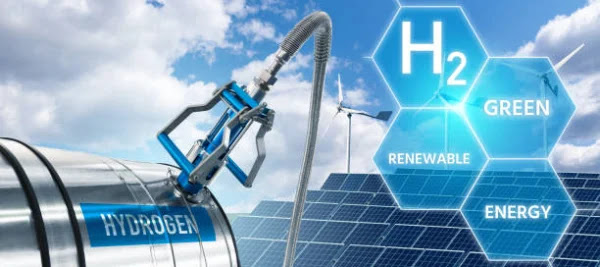Exploring Innovative Renewable
Innovative Energy Storage Solutions
Introduction
In the quest for sustainable energy, renewable sources such
as solar, wind, and hydroelectric power have gained significant traction.
However, their intermittent nature poses challenges to grid stability and
reliability. To address this, effective energy storage solutions are essential.
This article explores various innovative renewable energy storage technologies
that hold promise for a more resilient and sustainable energy future.
- Battery Energy Storage Systems (BESS):
Battery energy storage systems have emerged as a leading solution for
storing energy generated from renewable sources. Lithium-ion batteries, in
particular, have gained widespread adoption due to their high energy
density, efficiency, and declining costs. These batteries can store excess
energy during periods of high generation and discharge it when demand
exceeds supply, thereby balancing the grid and improving reliability.
Moreover, advancements in battery technology, such as solid-state
batteries and flow batteries, offer enhanced safety, longevity, and
scalability, making them suitable for a wide range of applications from
residential to utility-scale projects.
- Pumped Hydro Storage: Pumped hydro
storage is one of the oldest and most widely deployed forms of grid-scale
energy storage. It involves pumping water to an elevated reservoir during
times of low demand and releasing it through turbines to generate
electricity during peak demand periods. This process effectively functions
as a large-scale battery, providing grid stability and balancing services.
While site-specific constraints limit the widespread adoption of pumped
hydro storage, innovative designs such as underground reservoirs and
closed-loop systems are being explored to overcome these challenges and
expand its utilization.
- Compressed Air Energy Storage (CAES):
Compressed air energy storage systems utilize surplus electricity to
compress air and store it in underground caverns or pressurized
containers. During periods of high demand, the compressed air is released
and expanded through turbines to generate electricity. CAES offers
scalability, long-duration storage capabilities, and relatively low
environmental impact compared to traditional fossil fuel-based power
plants. Moreover, advancements in isothermal and adiabatic CAES
technologies aim to improve efficiency and mitigate environmental
concerns, further enhancing its attractiveness as a renewable energy
storage solution.
- Thermal Energy Storage (TES):
Thermal energy storage technologies store excess heat or cold generated
from renewable sources and release it when needed to meet demand. One
common approach is using molten salt or phase-change materials to store
solar thermal energy, which can then be used to generate electricity or
provide heating. TES systems offer high energy density, long-duration
storage, and compatibility with existing infrastructure, making them
suitable for both residential and commercial applications. Additionally,
innovations such as advanced insulation materials and integrated TES
systems with solar collectors or heat pumps enhance efficiency and overall
system performance.
- Hydrogen Energy Storage: Hydrogen
has gained attention as a versatile energy carrier and storage medium for
renewable energy. Electrolysis, powered by excess renewable electricity,
splits water into hydrogen and oxygen. The hydrogen can then be stored and
transported for later use in fuel cells to generate electricity or as a
feedstock for industrial processes. Hydrogen storage offers high energy
density and long-duration capabilities, making it suitable for
applications where other storage technologies may not be feasible, such as
long-term grid balancing and decarbonizing sectors like heavy industry and
transportation.
- Flywheel Energy Storage: Flywheel
energy storage systems store kinetic energy in a rotating mass and release
it as electricity when needed. They offer rapid response times and high
cycling capabilities, making them well-suited for frequency regulation and
grid stabilization. Flywheels are particularly useful in conjunction with
intermittent renewable energy sources, providing short-term backup power
during fluctuations in generation. Furthermore, advancements in materials
and magnetic bearings have led to improvements in efficiency, reliability,
and cost-effectiveness, expanding the potential applications of flywheel energy storage in both grid and off-grid settings.
Conclusion
Renewable energy storage solutions play a crucial role in
enabling the widespread integration of renewable energy sources into the grid.
From battery energy storage systems to innovative technologies like compressed
air energy storage and hydrogen storage, various options are available to
address the intermittency and variability of renewable generation. As these
technologies continue to advance and mature, they will play an increasingly
important role in building a resilient, sustainable, and carbon-free energy
future.
